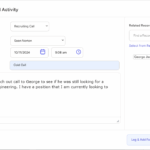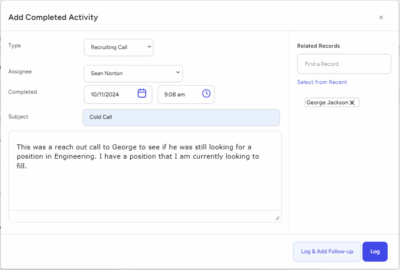Time and attendance software is a type of software that is designed to help organizations manage their employees’ time and attendance data. This software automates the process of recording and tracking employee attendance, absences, and time off requests. The system provides an efficient way to monitor and manage employee time, which can help businesses improve productivity, reduce payroll errors, and comply with labor laws.
The basic function of time and attendance software is to record the clock-in and clock-out times of employees. This data is then used to calculate the total hours worked by an employee in a given pay period. The software can also track employees’ breaks, lunches, and overtime hours. In addition, many time and attendance systems allow employees to request time off, and managers to approve or deny those requests.
Time and attendance software benefits
One of the primary benefits of time and attendance software is that it eliminates the need for manual time tracking. Manual tracking, such as using paper timesheets, is prone to errors and can be time-consuming for both employees and managers. This automates the process and provides accurate and reliable data. This helps organizations avoid errors in payroll and saves time for managers who would otherwise spend hours manually tracking employee time.
Another key benefit of time and attendance software is that it can help organizations comply with labor laws. Many labor laws require employers to track and maintain accurate records of employee time and attendance. Failure to comply with these laws can result in penalties and fines. Time and attendance software can help organizations comply with these laws by providing accurate and detailed records of employee time and attendance.
Time and attendance software can also help organizations manage employee scheduling. The software can be used to create and manage employee schedules, assign shifts, and track employee availability. This can help managers ensure that the right number of employees are scheduled for each shift, and that employees with the necessary skills and experience are scheduled for specific tasks.
Finally, this can help organizations improve productivity by providing real-time data on employee attendance and time off. This data can be used to identify trends and patterns in employee attendance, which can help managers identify and address issues that may be affecting productivity. The software can also help managers identify employees who are consistently absent or tardy, and take action to address those issues.
Overall, time and attendance software is an essential tool for any organization that wants to manage employee time and attendance data efficiently and accurately. The software can help businesses improve productivity, reduce errors in payroll, comply with labor laws, and manage employee scheduling. By automating the process of recording and tracking employee time and attendance, organizations can free up time for managers and employees to focus on other important tasks, and ultimately improve the bottom line.
Time and attendance software best practices
Time and attendance software is an essential tool for managing employee time and attendance data. While its primary purpose is to track employee attendance and time off, it can also be used to improve recruitment and hiring processes. Below are five best practices for using this software to recruit and hire top talent:
#1—Use data to identify recruitment and hiring trends.
One of the primary benefits of time and attendance software is that it provides accurate and detailed data on employee time and attendance. This data can be used to identify trends and patterns in employee attendance and time off. By analyzing this data, you can identify times of the year when employee absences are highest or lowest, and adjust your recruitment and hiring strategies accordingly.
For example, if you notice that employee absences are highest during the summer months, you may want to consider hiring more temporary employees during that time. If you notice that employee absences are highest on Mondays or Fridays, you may want to schedule interviews for those days to minimize the impact on your team.
#2—Streamline the hiring process.
Time and attendance software can help you streamline the hiring process by automating many of the administrative tasks associated with recruiting and hiring. For example, you can use the software to automate the scheduling of interviews, send automated emails to candidates, and track candidate status and feedback.
By automating these tasks, you can save time and reduce the risk of errors in the hiring process. This can help you make faster and more informed hiring decisions, and ultimately attract and retain top talent.
#3—Use time and attendance data to inform hiring decisions.
In addition to using time and attendance data to identify recruitment and hiring trends, you can also use this data to inform hiring decisions. For example, you can use the software to track employee attendance and punctuality during the onboarding process. If a new hire consistently arrives late or is absent frequently during the first few weeks of employment, it may be a red flag that the employee is not a good fit for the role.
Conversely, if a candidate has a strong attendance record in their previous role, it may be an indicator that they are a reliable and committed employee. By using time and attendance data to inform hiring decisions, you can increase the likelihood of hiring top talent who will be a good fit for your organization.
#4—Monitor and track employee time off requests.
Time and attendance software can also be used to monitor and track employee time off requests. By using the software to track time off requests, you can ensure that employees are not taking excessive time off, and that they are adhering to your organization’s policies and procedures.
In addition, tracking time off requests can help you identify employees who may be experiencing burnout or stress. If an employee consistently requests time off or takes sick leave, it may be a sign that they are struggling with their workload or facing personal challenges. By addressing these issues proactively, you can help reduce turnover and retain top talent.
#5—Use time and attendance software to manage employee scheduling.
Finally, time and attendance software can be used to manage employee scheduling. By using the software to create and manage employee schedules, you can ensure that the right number of employees are scheduled for each shift, and that employees with the necessary skills and experience are scheduled for specific tasks.
This can help you ensure that your team is properly staffed, and that employees are working in roles that are a good fit for their skills and experience. By using time and attendance software to manage employee scheduling, you can improve productivity, reduce errors in scheduling, and ultimately attract and retain top talent.








